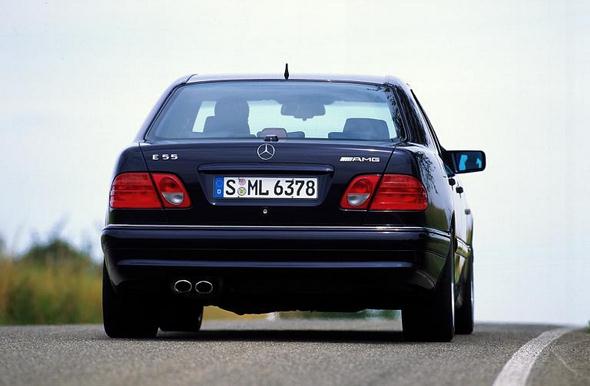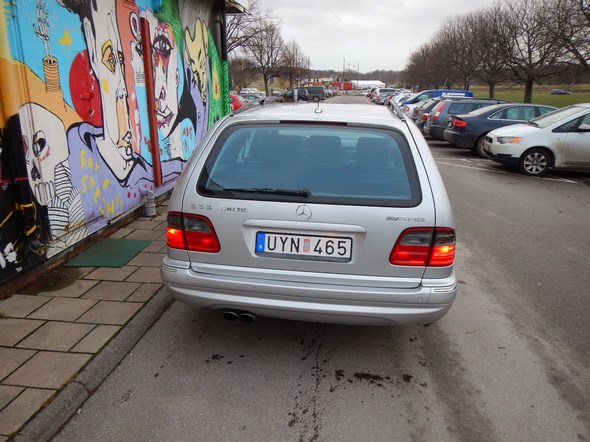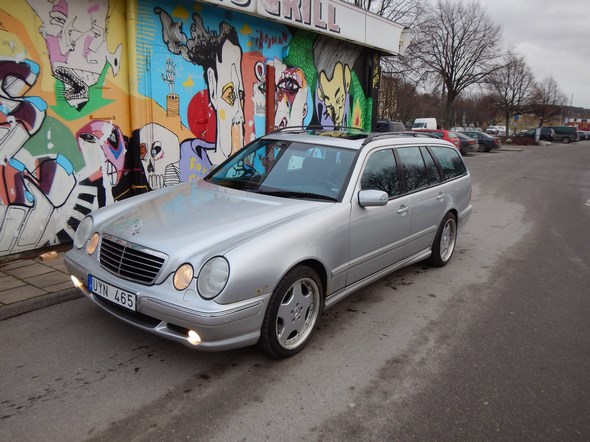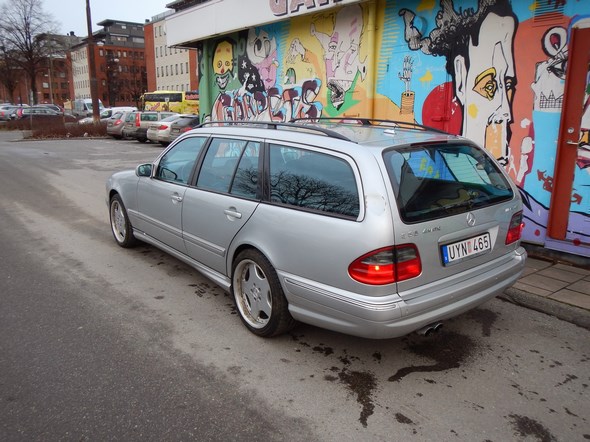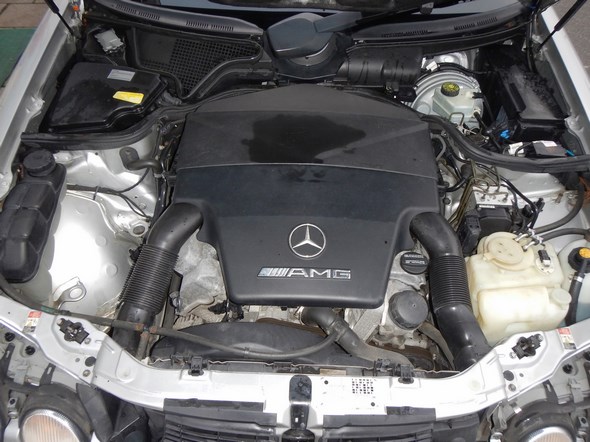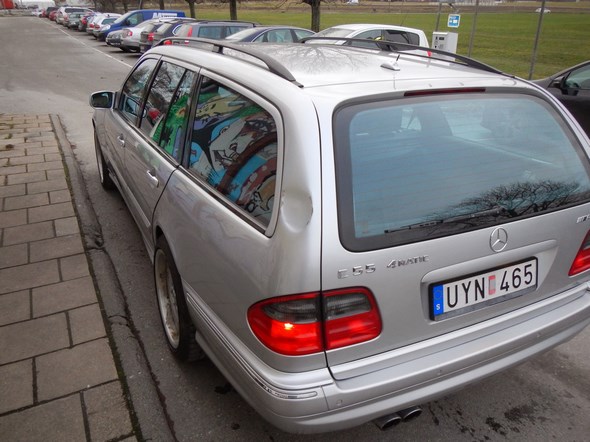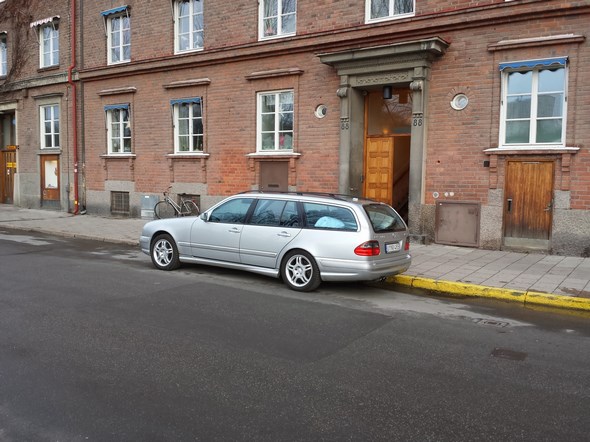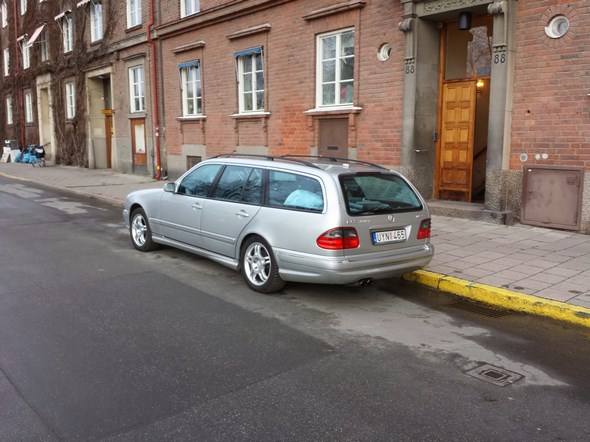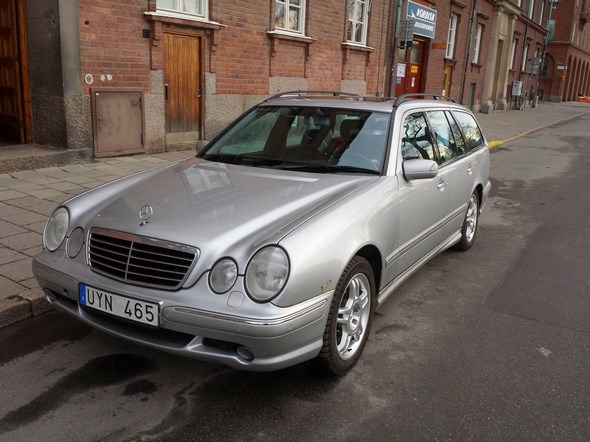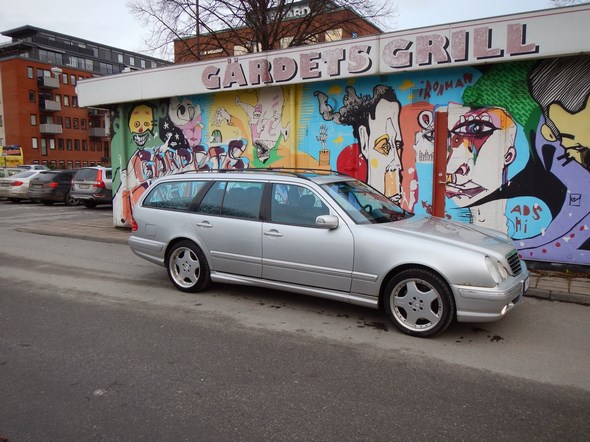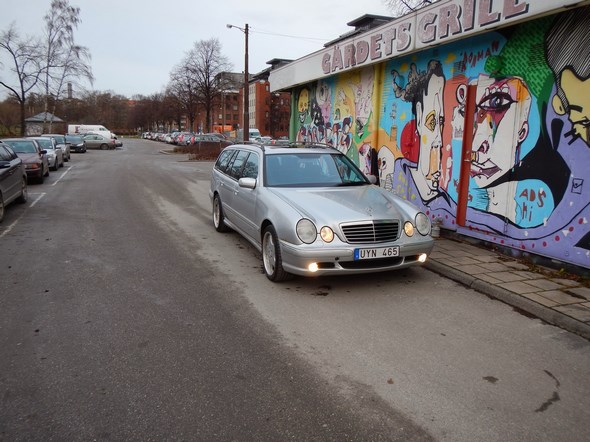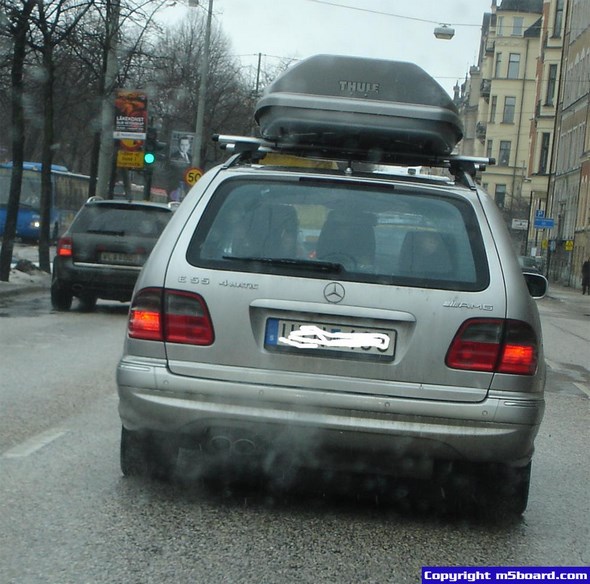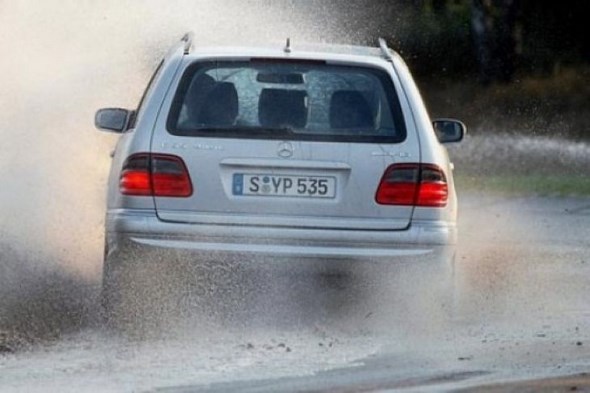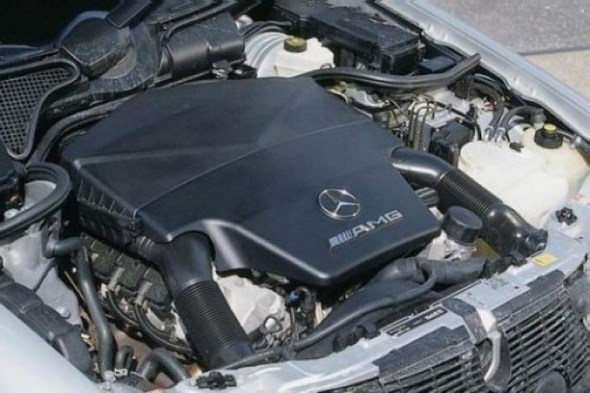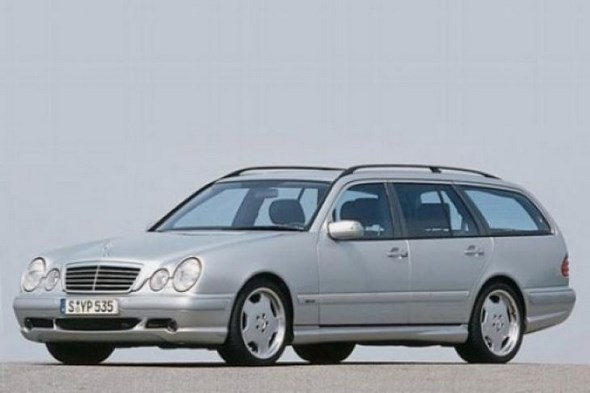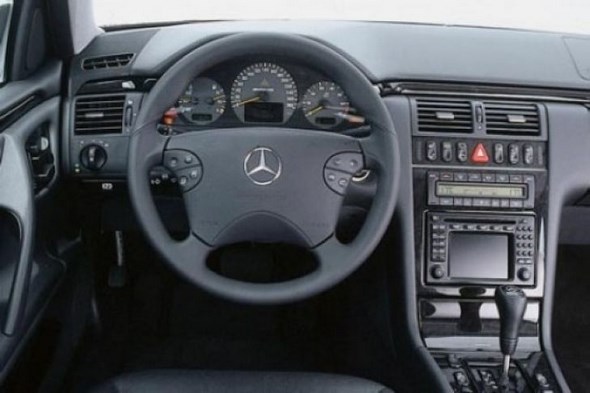Mercedes W210 E-Class 1995-2002


The Mercedes-Benz W210 is a mid-size luxury car–executive car which was produced by the German automaker Mercedes-Benz from 1995 through 2002 (production of the wagon variant (codenamed W210) carried over to the 2003 model year). The W210 replaced the W124 model.

They were sold under the E-Class model names in both sedan (saloon) and station wagon body types.
The W210 E-class heralded a brand new design idiom for the Mercedes ‘face’, which would continue until the C209 CLK.
[adsense]This idiom was the mainstream fashion used by Mercedes-Benz for a long period, and it made it on the SL, C-class, CLK, CL and S-class of the time.

When the new CLK replaces the current model it will have been 13 years since this characteristic twin-headlamp design was used.
The W210 quickly became the biggest seller in MB production.
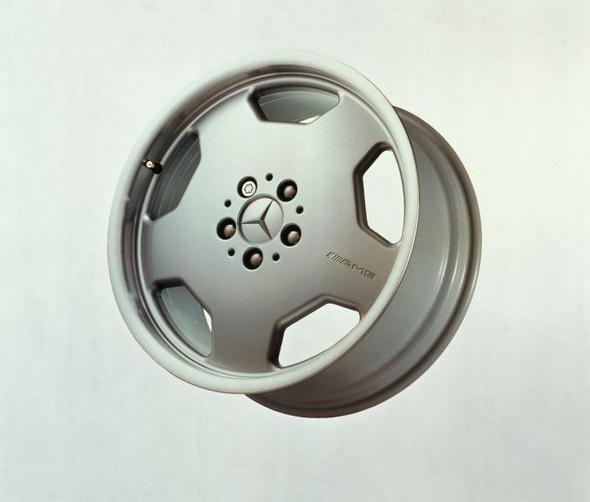
The final W210 production included E320 special edition, and E430 special edition released in two exterior colors – quartz silver (limited edition), obsidian black, and with Xenon lights, 17-inch alloy wheels and black maple walnut trim.

In the 2000 model year, a new multi-function information system was incorporated into the instrument cluster below the speedometer, and the use of a fiber optics system for the audio/navigation/phone system was introduced, all accessed by steering wheel controls.
[adsense]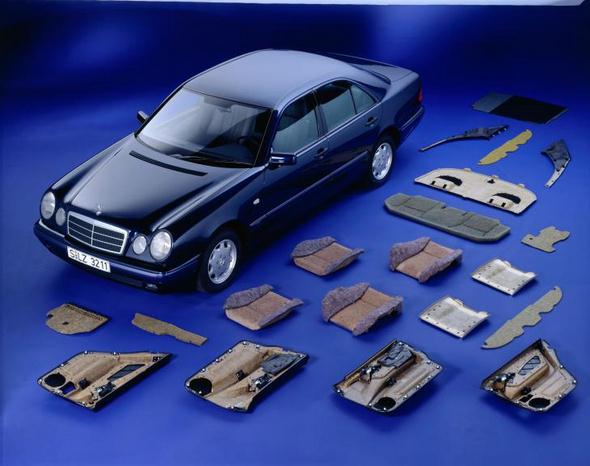
In addition, the 5-speed automatic transmission introduced “Touch Shift,” which used the +/- gate positions for manumatic control (similar to the VW/Porsche “Tiptronic” system).
Exterior changes included a revised front with a steeper rake, similar to the CLK, and restyled bumpers and lower body trim.

Engines
This was the first time a V6 engine was offered (1998) to replace the straight-6 configuration (1996-1997).
This new Mercedes-Benz M112 engine produced 221 hp (164 kW) and 229 ft·lbf (310 N·m) of torque and offered a 0-60 mph (98 km/h) of 6.9 seconds.

Other offerings were the E420 (1997), E430 (1998-2002), and E55 AMG (1999-2002) with 354 hp (264 kW) and a 5.4 L normally aspirated engine.
In North America, the range also features two E300 diesel engine models, including both non-turbocharged (1996-1997) and turbocharged (1998-1999) 3.0 litre straight-6 units.

In 2000, Mercedes-Benz discontinued diesel powerplants in the E-class in North America.
In Europe, the diesel engines were superseded by more advanced Common Rail (CDI) units (2000-2002).
The CDI engines were not offered in North America until the E320 CDI in the newer W211 model.

Gasoline Engines for North American Market.
- E 260 (M104, 3.199 cm³ 2.6L, 162 kW/220 PS/206 hp) 2000-2002
- E 320 (M104, 3.199 cm³ 3.2L, 162 kW/220 PS/217 hp) 1996-1997
- E 420 (V-8 M119, 4.196 cm³ 4.2L, 205 kW/279 PS/275 hp) 1997
- E 430 (V-8 M113, 4.266 cm³ 4.3L, 205 kW/279 PS/275 hp) 1998-2002
- E 55 AMG (V-8 M113, 5.439 cm³ 5.4L, 260 kW/354 PS/349 hp) 1998-2002
Diesel for North American Market.
- E 300 Diesel (I-6, 2.996 cm³ 3.0L, 100 kW/136 PS/134 hp) 1996-1997
- E 300 Turbodiesel (I-6, 2.996 cm³ 3.0L, 130 kW/177 PS/175 hp) 1998-1999
| Engine | Cyl. | Power | Torque |
| 2.0 16V | I4 | 136 PS (100 kW; 134 hp) | 190 N·m (140 lb·ft) |
| 2.0K 16V | I4 | 193 PS (142 kW; 190 hp) | 280 N·m (207 lb·ft) |
| 2.3 16V | I4 | 150 PS (110 kW; 148 hp) | 220 N·m (162 lb·ft) |
| 2.0 16V K | I4 | 163 PS (120 kW; 161 hp) | 230 N·m (170 lb·ft) |
| 2.4 18V | V6 | 170 PS (125 kW; 168 hp) | 225 N·m (166 lb·ft) |
| 2.8 24V | I6 | 193 PS (142 kW; 190 hp) | 270 N·m (199 lb·ft) |
| 2.8 18V | V6 | 204 PS (150 kW; 201 hp) | 270 N·m (199 lb·ft) |
| 3.2 24V | I6 | 220 PS (162 kW; 217 hp) | 315 N·m (232 lb·ft) |
| 3.2 18V | V6 | 224 PS (165 kW; 221 hp) | 315 N·m (232 lb·ft) |
| 4.2 32V | V8 | 280 PS (206 kW; 276 hp) | 400 N·m (295 lb·ft) |
| 4.3 24V | V8 | 279 PS (205 kW; 275 hp) | 400 N·m (295 lb·ft) |
| 3.6 24V AMG | I6 | 279 PS (205 kW; 275 hp) | 385 N·m (284 lb·ft) |
| 5.0 32V AMG | V8 | 347 PS (255 kW; 342 hp) | 480 N·m (354 lb·ft) |
| 5.4 24V AMG | V8 | 354 PS (260 kW; 349 hp) | 530 N·m (391 lb·ft) |
| 2.2 16V D | I4 | 95 PS (70 kW; 94 hp) | 150 N·m (111 lb·ft) |
| 2.2 16V CDI | I4 | 102 PS (75 kW; 101 hp) | 235 N·m (173 lb·ft) |
| 2.2 16V CDI | I4 | 115 PS (85 kW; 113 hp) | 250 N·m (184 lb·ft) |
| 2.2 16V CDI | I4 | 125 PS (92 kW; 123 hp) | 300 N·m (221 lb·ft) |
| 2.9 10V TD | I5 | 129 PS (95 kW; 127 hp) | 300 N·m (221 lb·ft) |
| 3.0 24V D | I6 | 136 PS (100 kW; 134 hp) | 210 N·m (155 lb·ft) |
| 2.2 16V CDI | I4 | 143 PS (105 kW; 141 hp) | 315 N·m (232 lb·ft) |
| 2.7 20V CDI | I5 | 170 PS (125 kW; 168 hp) | 370 N·m (273 lb·ft) |
| 3.0 24V TD | I6 | 177 PS (130 kW; 175 hp) | 330 N·m (243 lb·ft) |
| 3.2 24V CDI | I6 | 197 PS (145 kW; 194 hp) | 470 N·m (347 lb·ft) |

Transmissions
The 1996 model W210 E-Class carried over the 4-speed automatic transmission from the previous W124 generation E-Class.
In 1997, Mercedes installed in the E-class its electronically-controlled model 722.6 5-speed automatic transmission that first saw duty in 1996 in the V8-powered W140 S-class models.

The 722.6 transmission is now used in a number of Daimler-Chrysler vehicles. The 5-speed transmission was marketed as “sealed for life” however Mercedes dealers now recommend changing the fluid at regular intervals.
A 5-speed manual is also available, although during facelift in 2000, it was replaced by a 6-speed manual.
Wheels / Rims and Fitment
The W210 chassis originally came with one of the following OEM wheel setups:
- E300/E320: 16 x 7.5” ET41
- E420: 16 x 7.5” ET41
- E430: 16 x 7.5” ET41 (before 2000); 17 x 7.5” ET41 (after 2000)
- Sport Package: 17 x 8” ET37
- Special Edition: 17 x 8” ET35
- E55: 18 x 8” ET31 front, 18 x 9” ET35 rear.
ET (Einpress Tiefe) is a German abbreviation for offset, where the number is in mm and indicates amount of offset.
This ETxx is stamped on the inside of OEM rims for easy reference.

The bolt pattern is 5×112 (12mm x 1.5 lugs), with an offset range of 30-40mm, a wheel size range of 16″x6.0″ to 20″x8.5″.
This is the same bolt pattern as most Mercedes, including the previous E-Class (W124).

The newer Mercedes, including the 2003 to the present E-Class (W211), have 14 mm lugs, making the wheels interchangeable only with the use of aftermarket lugs.
AMG versions
There were 4 engines that AMG used in the W210. The first was the E36, M104.995, launched in 1996 then the M119.985 in the Euro Spec E50 AMG produced only in 1997.

There was also an option for the M119.985 that was bored out to 6.0L V8 the cars these were fitted to were designated as the E60 and came in sedan and wagon varieties.

In 1998 came the M113 powered E55 which used a 5.4L V8 SOHC 24V to produce 354 PS (260 kW) and 391 ft·lbf (530 N·m) of torque.

The body styling on all of the W210 AMG models was the same until 2000 when a facelift and interior upgrades were implemented.

The 210 E55 was the last vehicle that a major portion of production took place by hand at AMG in Affalterbach.

Production was actually split between Affalterbach and the Bremen Mercedes Benz facility until the end of 2001.

Specification (European versions)
E50 AMG
The E50 was only produced 2 years 1996 and 1997 even though all were considered model year 1997.
Production Figures: ~2,870 (production models).
- Chassis 210.072
- Motor M 119.985
- Transmission 722.60x

Engine
- 90° V8, high-pressure die-cast alloy block, alloy heads
- Displacement 5.0 L (6.0)
- Bore 3.72 in (94 mm)
- Stroke 3.51 in (89 mm)
- Compression ratio: 11.2:1 (same)
- Output 342 hp (255 kW) @ 5,550 rpm (398 hp)
- Torque 355 ft·lbf (481 N·m) @ 3,200 – 4,400 rpm (395 lb·ft)
- Valve Gear Belt-driven DOHC, 4 valves per cylinder.
- Redline 6000 rpm Distributor-less computer controlled ignition. Electronic Fuel Injection (Bosch LH Jetronic)
(Same engine used in the S500/C, SL500, with tuned exhaust and cylinder head)

Transmission
- 5 and 6 speed auto 722.609 (same as C43, E55, SL/S600/c)
- Final drive ratio 2.82
- 1st gear 3.59
- 2nd gear 2.19
- 3rd gear 1.41
- 4th gear 1.00
- 5th gear 0.83
- 6th gear 1.33
- Reverse gear 3.16
Performance
- General Consensus 0-60 0-100 ~6 SECs
- 0-100 6,2 s (AMG figure)
- 0-100 5,8 s (Auto Motor und Sport 9/96)
- Top speed: 270 km/h (Drag limited)
The 1998 and 1999 E55 are identical to the E50.
1999 E55 AMG
The W210 E55 was produced for 5 years 1998 through 2002 with a facelift in 2000. Production Figures. ~12000 accounted for (production Models). 3000 per year. 500 per year imported to USA.
- Chassis: 210.074
- Motor: M 113.980
- Transmission: 722.622
Engine
- 90 degree V-8, high-pressure die-cast alloy block, alloy heads
- Displacement 5.5 L
- Bore 3.82 in (97 mm)
- Stroke 3.62 in (92 mm)
- Compression ratio 10.5:1
- Output 349 hp (260 kW) @ 5,550 rpm
- Torque 391 ft·lbf (530 N·m) @ 3,150 – 4,500 rpm
- Valve Gear Belt-driven SOHC, 3 valves per cylinder.
- Redline 6,000 rpm
(Same engine used in the E430, C43)
Transmission
- 5 and 6 speed auto 722.6 (same as C43, E55, SL/S600/c)
- Final drive ratio 2.82
- 1st gear 3.59
- 2nd gear 2.19
- 3rd gear 1.41
- 4th gear 1.00
- 5th gear 0.83
- 6th gear 0.92
- Reverse gear 3.16
Performance
- General Consensus 0-60 mph – 0-100 km/h 5.4 s
- 0-100: 5,4 s AMG figure (1999)
- Station Wagon (T-modell): 5,7 s
- 0-100: 5,3 s (Auto Motor und Sport 7/98)
- Top speed: 260 km/h (155 mph) Electronically limited.
E50, E55 and E60 AMG – common technical specs
Suspension
- Front Independent double wishbone with coil springs, gas-pressurized shock absorbers and stabilizer bar.
- Rear 5-arm multilink with coil springs, gas-pressurized shock absorbers and stabilizer bar.
Brakes Hydraulic dual-circuit braking system with vacuum servo unit, disk brakes, internally ventilated, two piece front rotors and 4-piston calipers.
Steering
- Type Rack-and-pinion with speed-sensitive power assist and integrated hydraulic damper.
- turns lock-to-lock 3.20
- turning circle curb-to-curb 37.2 ft (11.3 m)
Wheels and tires (tyres)
- Wheel Size(front) 9.0J x 18 in
- Wheel Size(rear) 9.0J x 18 in
- Wheel Type Aluminum Alloy ///AMG monoblock
- Tires 245/40ZR18 front, 275/35ZR18 rear
Dimensions and weight
- Wheelbase 111.5 in/2,833 mm
- Front track 61.4 in/1,560 mm
- Rear Track 60.8 in/1,543 mm
- Length 189.4 in/4,810 mm
- Width 70.8 in/1,799 mm
- Height 56.9 in/1,445 mm
- Curb Weight 3,768 lb/1,715 kg
- Coefficient of drag: 0.29 Cd
- Power-to-weight ratio: 0.09
Options available Power adjustable front seats, sport steering wheel, leather upholstery, leather shift knob, 5 and 6 speed automatic transmission, Brake Assist System (BAS), Electronic Stability System (ESP), automatic climate control with charcoal filter, heated front seats, front and side airbags, power windows, metallic paint, xenon HID headlamps. 4 MATIC (Euro spec E55s)
[adsense]
E55 After 2000 supplemental information
Suspension
- Front: Independent double wishbone with coil springs, gas-pressurized shock absorbers and stabilizer bar.
- Rear: Independent 5-arm multilink with coil springs, gas-pressurized shock absorbers and stabilizer bar. Separate AMG-Bilstein gas-pressurized shock absorbers and progressive-rate coil springs. Larger, solid stabilizer bars.

4MATIC All-Wheel Drive Option
In 1998, Mercedes-Benz reintroduced the 4Matic all-wheel drive system in the US on the W210, although it was previously available in some European territories.

Although this 4Matic system shares its name with the 90’s 4MATICsystem of the W124 300TE, the system was totally redesigned and simplified.
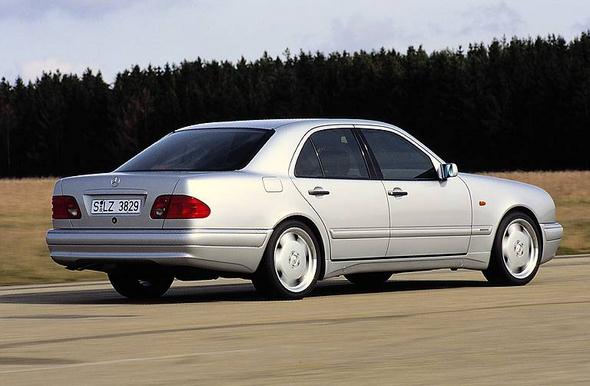
Rather than using the clutches and couplings of the earlier design, Mercedes opted to use three open differentials: front, center, and rear.

The front suspension design of the 4Matic-equipped models is different to the rear wheel drive models and makes some replacement parts (such as shock absorbers) more expensive.

A really rare creature is the W210 E55AMG 4-matic that was produced in just 14 examples, between 1999 – 200.** as a wagon only 6 were ever made, I have myself owned one of them 🙂

